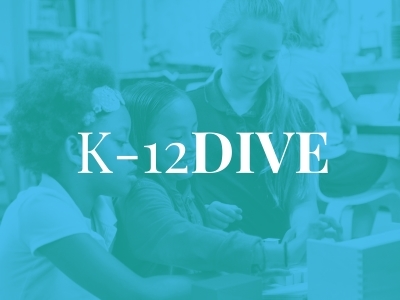Mindsets and the New Brain Science
Topics

Today’s learners face an uncertain present and a rapidly changing future that demand far different skills and knowledge than were needed in the 20th century. We also know so much more about enabling deep, powerful learning than we ever did before. Our collective future depends on how well young people prepare for the challenges and opportunities of 21st-century life.
Practitioner's Guide to Next Gen Learning
Success doesn’t bring happiness. Happiness brings success and it’s possible for schools to foster optimism and social support and help students manage stress.
The advantages found in next gen learning models include greater personalization to meet individual needs, increased ownership (voice and choice), and a holistic commitment to meeting the learner’s social and emotional needs. Similarly, MyWays provides a promising framework to focus on more meaningful measures of learner success and the learning experience.
I’ve started to wonder, though, about happiness. Especially when I hear parents say, “I don’t care what my daughter does when she grows up... I just want her to be happy.” I’ve begun to see happiness differently, and now I wonder what role happiness might play in helping us rethink learning. New and maybe unusual research findings along these lines can guide us to refresh, inspire, and reimagine learning.
Success doesn’t bring happiness. Happiness brings success.
Research shows that we perform best when our brains are in a positive state (as compared with a negative or neutral state). In a happy state, our brain is chemically activated and opens to learning. Across multiple tasks and a variety of professions, being in a positive, happy, or optimistic state improves performance and can make you up to 31% more productive.
It’s not necessarily the reality that shapes us but the lens through which your brain views the world that shapes your reality.
–Shawn Achor, The Happiness Advantage
When students are in a positive mental space, they are likely to perform better, feel better, view themselves and their world more positively, and go about creating more success. What’s the secret to fostering this mindset? Harvard psychologist Shawn Achor provides the underlying research and a useful prescription for achieving these mental states in his highly entertaining Ted Talk:
I was struck most by Shawn’s finding that when you’re happy, success comes almost naturally. We create it with ease. And learning to create it may well be the most valuable 21st century skill we’re not yet fully embracing in education.
Shawn’s research shows external conditions don’t create happiness (at least not after basic survival needs are met). Yet education on the whole still assumes students are externally motivated by grades, awards, the privilege of going to college, and the promise of a high-paying job. We have increasing evidence that external rewards do not effectively motivate or sustain engagement—especially with more complex learning challenges or issues (e.g., think Flint’s need for clean water or a cure for cancer). Our thinking about the purpose of education—enabling an economic quality of life that leads to eventual happiness—may need further refinement.
Happiness can be learned.
Specific practices have been linked to improved and sustained positive brain states. Supported for at least 21 days, they rewire the brain. These include simple daily rituals:
- Identifying at least three new things each day for which we’re grateful. This teaches the brain to look for the good (its natural state is to focus upon the bad).
- Savoring at least one good experience by reflecting upon, revisiting, and/or journaling about it.
- Sending positive or appreciative notes to our friends, family, peers, or community.
- Nurturing a network of supportive colleagues, friends, and family.
- Practicing mindfulness or moment-to-moment awareness, which improves our focus and concentration, reduces anxiety, and promotes wellbeing.
- Moving our bodies. This activates the body-mind connection to support learning, reduce stress, and build confidence.
- Choosing optimism especially when faced with a challenging event or circumstance and viewing the experiences as temporary instead of internalizing it.
- Actively making decisions. Making conscious choices and decisions promotes a greater sense of control.
Compare this list to the mindsets getting the most attention in education reform circles today: hard work, persistence, determination, grit. While these are certainly worthwhile skills, I can’t help but wonder if part of their current-day value is that they help students survive a system that isn’t really user-friendly. When we focus on sameness, filling perceived deficits, and treating children as if they are the ones who are broken, we stop looking at what’s broken with the system.
Next gen personalized learning is about changing the system that creates false realities, getting away from a system that causes us to doubt children’s motivation and interest in learning. How does a focus on positive mindsets as a key aspect of college and career readiness shift how we view the system? How does it change our understanding of what children are capable of when it comes to their own learning?
Certainly, next gen schools are paying attention to positive mindsets.
- Joy is a focus at Valor.
- Growth mindset is taught at Alpha Middle School.
- Mindfulness is being nurtured at Generation Schools Network.
Seventy-five percent of job success—what we think school is helping us achieve—is predicted by three asset bases:
- Optimism
- Network of social support
- Ability to see stress as a temporary challenge.
We can teach these as part of 21st century skills and work to ensure students experience opportunities to develop the right set of practices that work for them.
Resources
- How Mindfulness Could Help Teachers and Students, The Atlantic, August 31, 2015
- Inspiration for using mindfulness in your classroom, Amy Burke (TEDx Video)
- Mood Meter App. Use this app to help students build emotional self awareness and monitor readiness for learning.
- Spark: The Revolutionary New Science of Exercise and the Brain, John J. Ratey
- The End of Average: How We Succeed in a World that Values Sameness, Todd Rose
- Flourish: A Visionary New Understanding of Happiness and Well-being, Martin Seligman
- Nurturing Growth Mindsets: Six Tips from Carol Dweck, EdWeek, March 14, 2016
- Nurturing Your Creative Mindset, Sherri Fisher, The Creativity Post, March 3, 2016




